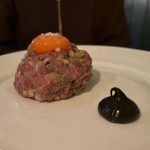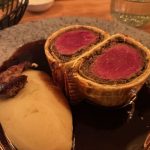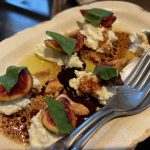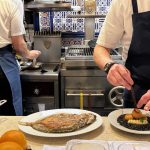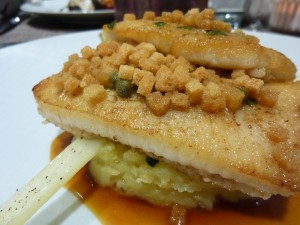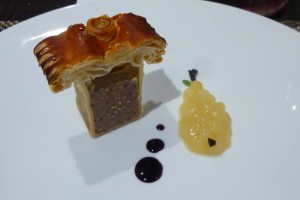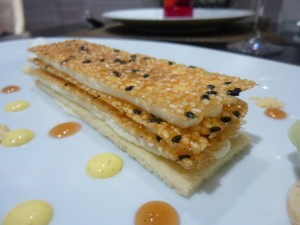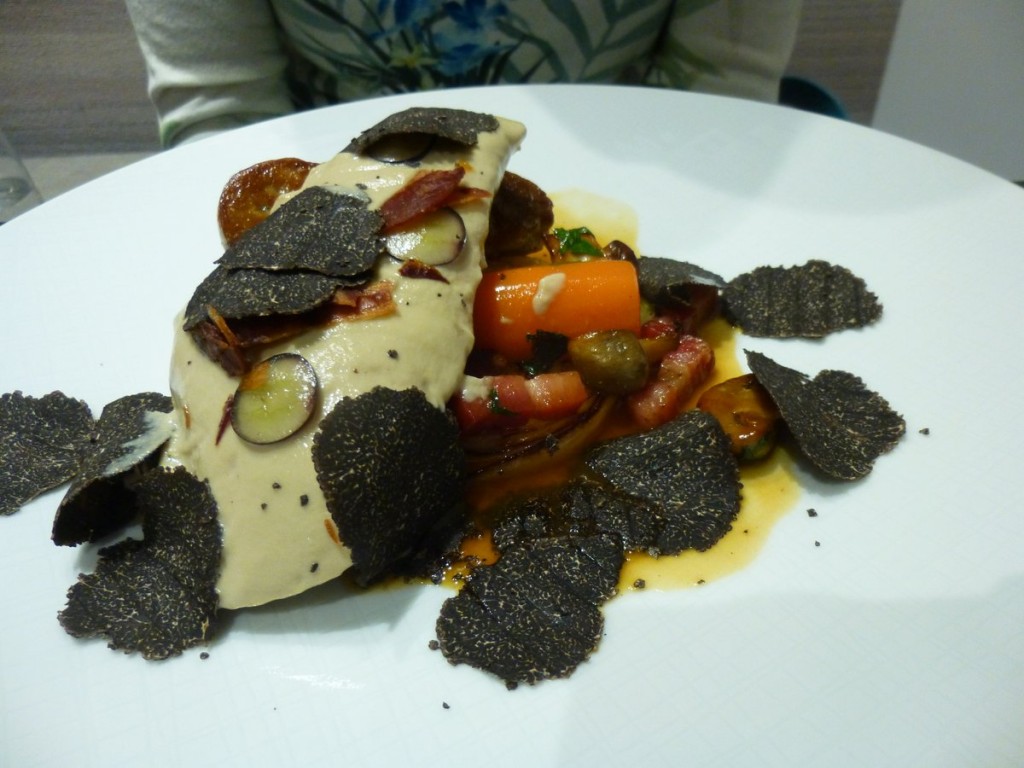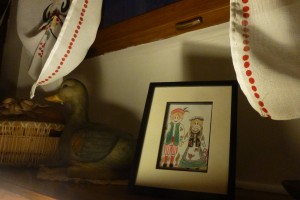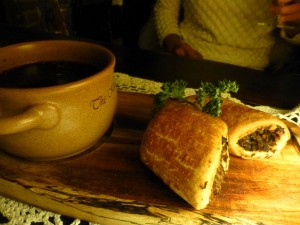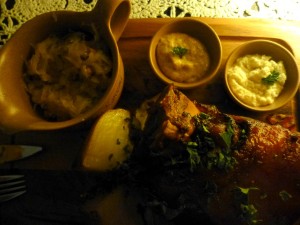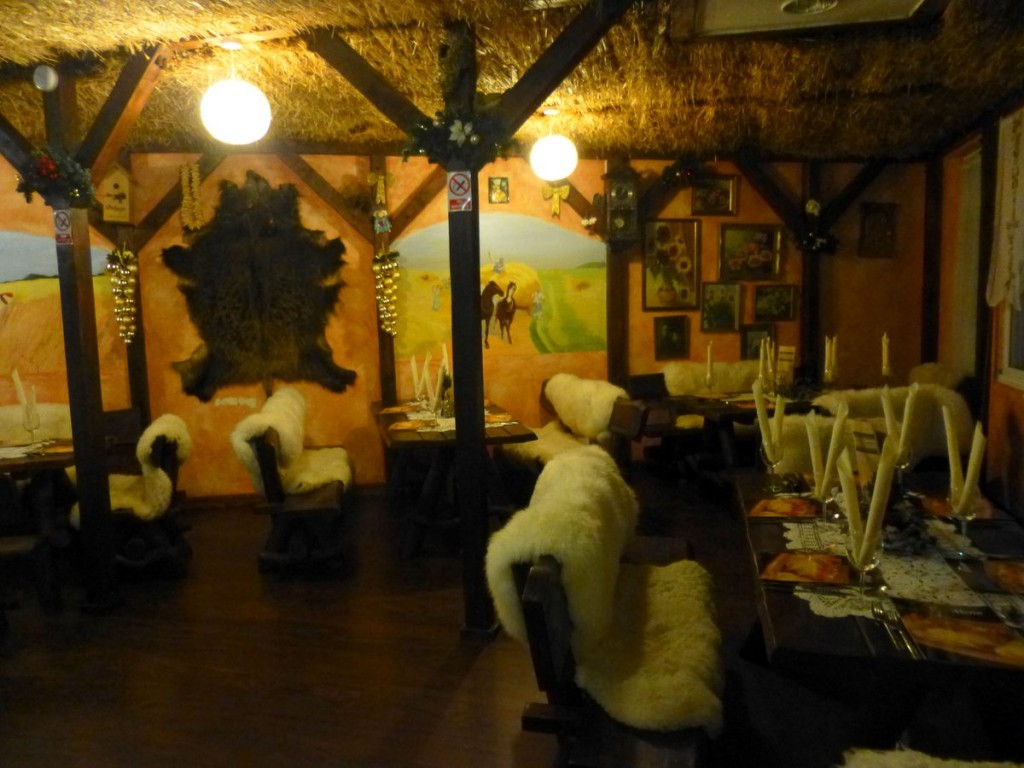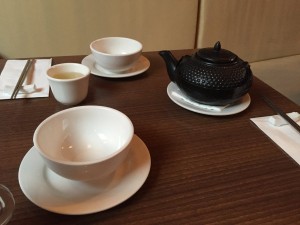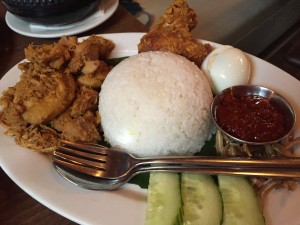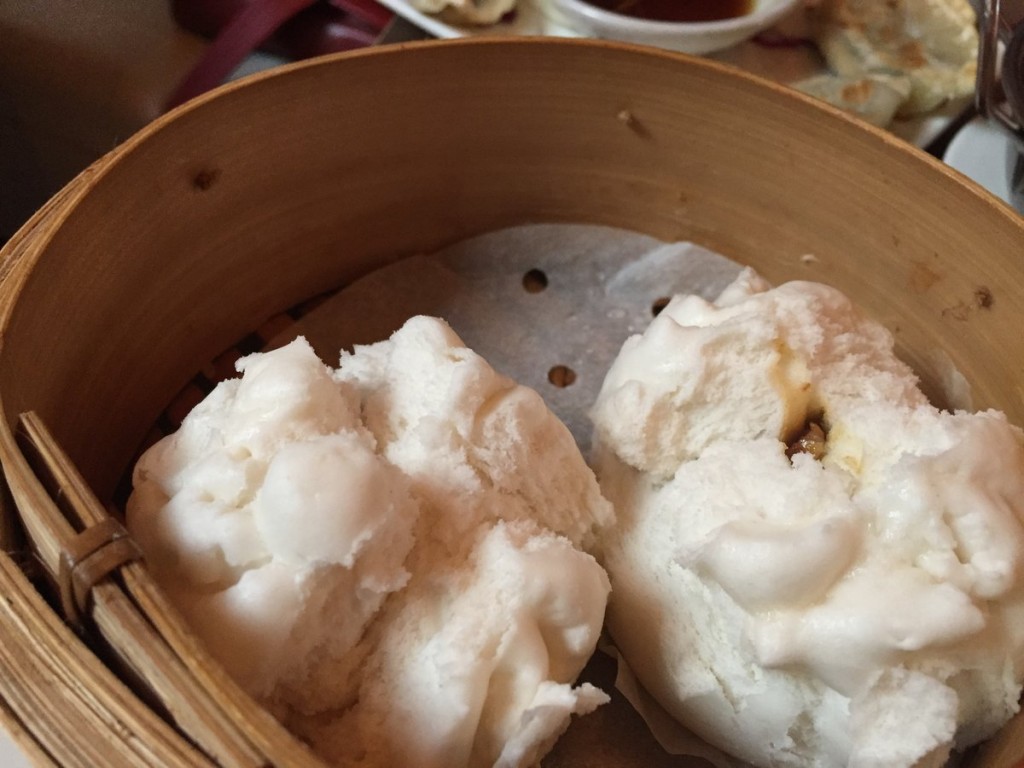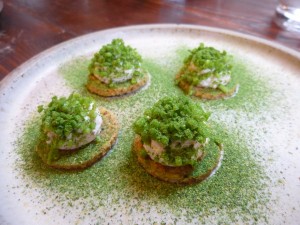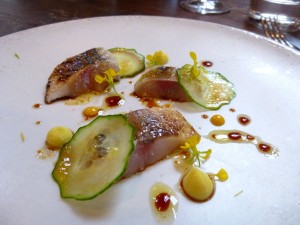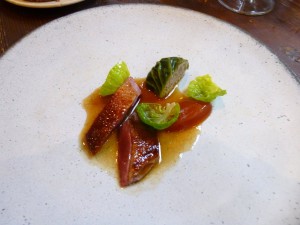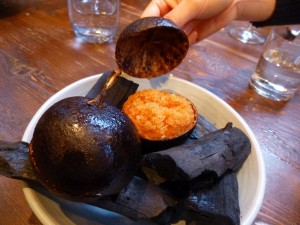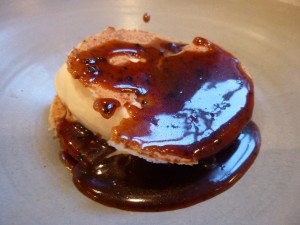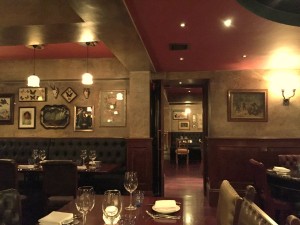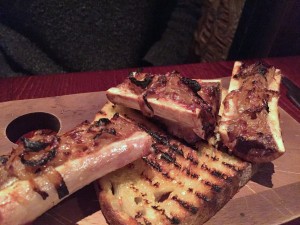This was my main course, “seared skate grenobloise with crushed pink fir apple potatoes and sea kale”. Seared implies flame-kissed, right? There’s gotta be some blackening somewhere if you want to call a thing seared? This wasn’t, it was floured and pan fried like any other good ol’ bit of skate. And that’s all it was – neither the greatest nor worst piece I’ve ever had, ho hum. Plenty of it, served atop a thick swathe of crushed potatoes so thoroughly buttered that there wasn’t the remotest taste of pink fir apple left. And some caper butter. So, a nice Friday night fish supper.
The dining room at The Castle Terrace is kinda uninspired as well, a bit starchy and unfortunately ’round the corner from the actual castle terrace so there’s no splendid view. It’s one of those cool, restrained rooms with nothing about it to remember or fall in love with. These impressions feed off each other though; if I’d loved the food I’d probably have something better to say of the setting. Service was good, and our sommelier picked out some decent glasses to match the food.Maureen’s main was pheasant with seared foie gras and Perigord truffles. Well, I guess it certainly was all those things. Big lump of pheasant breast. Nicely seared foie gras. Lots of slivers of black truffle. It can’t really not taste good with those ingredients, although that amount of solid white meat became a bit… ahem… boring after a while. Theme developing.
Wandering back to starters, mine was a venison pate en croute; sturdy texture and good taste with decent pastry and an inoffensive bit of stewed pear on the side. Maureen’s starter of gurnard tartare involved a large amount of lovely fine-diced raw fish, nicely citrusy, with a few bits and blobs of rhubarb far too discrete to have any impact on the dish.
Forward again to dessert, and my millefeuille of apple and sesame seed was dominated by the (admittedly good) sesame snape. Those are sesame snaps, right? I really had to search for the apple flavour. Maureen’s concoction of rhubarb was good.You could accuse us of having chosen “safe” menu options. But that’s half the fun at this kind of level of fine dining: to pick something seemingly familiar off the menu and discover what wonders the chef has conjured with it. This was just a whole meal of “oh, yeah” and shrugs. I felt as though I’d taken an amiable wander back into the fine dining of the 90’s and perhaps that’s exactly what many people want – certainly all the cooking itself was tip-top, just uninteresting. Anyway, for about £65 per person a la carte before drinks, that’s what you’ll get.



